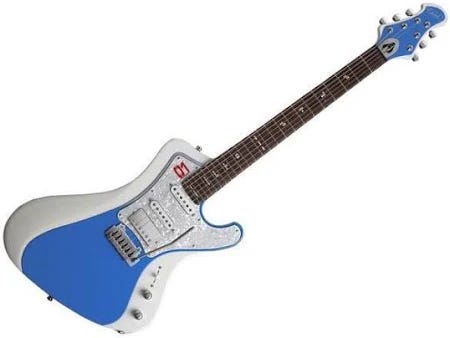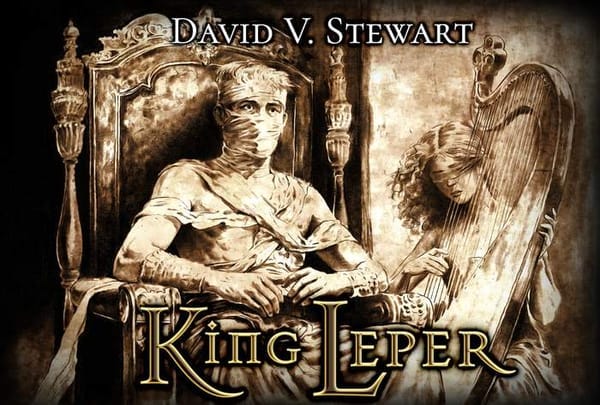Thick Miku or classic slim Miku? Or Brazillian Miku?
That’s not what this article is about. I want to talk about the games and, to an extent, the voices.
Have you backed King Leper yet? Get a limited edition hardback while you can!
If you aren’t familiar with the Project Diva games, they are a series of rhythm games made by Sega featuring the titular Hatsune Miku, who is not a real person but has a real (and amazing) signature guitar from ESP (and another from Edwards):
She also sings, and it’s not a voice actor singing…sort of.
Hatsune Miku is a Vocaloid, a programmable singing program developed by Yamaha Corporation, originally based on voice actress Saki Fujita. As part of a marketing strategy, they gave the various voices they had developed names and art to make them seem more human and familiar. Here are a few newer ones:
Unfortunately, I’ve never gotten to use a Vocaloid myself because I haven’t had a combination of the funds to buy the program and the time/need to experiment with virtual voices. I’m old school, and if I needed a voice for a project, I’d probably just sing it myself or have my wife do it. Vocaloids are interesting, however, because any musician can produce a track with, for example, Hatsune Miku on vocals. It’s an odd crossing point between the artificial and the human, the familiar and the novel.
Hatsune Miku (and her Vocaloid companions) ended up being a perfect fit for, of all things, a rhythm game because you could make any number of songs of any style and have her sing them – or change out the voice for any other model. You can use tracks from any artist community and put them in your game.
That’s the first reason I really like the Project Diva games: the music. There is such a variety in every game, from pop to ballads to hard rock songs, it’s hard to get bored. The voices are familiar and yet alien. They are able to perform things that would be difficult or impossible for a human. As a musician with somewhat specific tastes for listening and performance, the Project Diva games give me a chance to enjoy lots of music outside of my normal wheelhouse. The music in the games also happens to be better, much better, on average, than what you get just putting on the top Spotify songs. The game soundtracks are like a CD sampler of all the best deep cuts from subgenres I’ve never heard of. I like that kind of careful, curated exposure to (often) independent music rather than relying on the almighty algorithm to give me either popular crap or variations on what I already know.
The visuals of Hatsune Miku games are good enough, being mostly live-rendered pop music videos. The character designs work well for both the game and as personifications of the artificial – part of humanizing the digital. Their designs include odd clothes, like sleeves that don’t attach, and unnaturally long, colorful hair that reminds you that they are computerized, fake things merely gesturing toward the anime aesthetic. There is a strange meta layer to the whole thing, where virtual characters with virtual voices are performing music or failing at it based on your human input. You get to play dress-up in your games if that is your thing.
The biggest reason I like the games is the gameplay. Rather than selling proprietary controllers that imitate real things, like with Guitar Hero, Rock Band, or Taiko no Tatsujin, Project Diva uses standard controllers. These are familiar and highly responsive, and honestly much more precise than most of the proprietary counterparts, but are used in alien ways. As a guitarist, Guitar Hero was annoying mostly because it used an ugly imitation of the guitar that rebelled against both ergonomics and the way the instrument is actually used. Buttons do not correspond to pitches and rhythms are somewhat random and don’t line up with the guitar part in most cases. For a non-player, I imagine it was enough of a fantasy, but not for me. The same goes for the drums in Rock Band. A real kit makes you fall into familiar, practiced patterns, but the odd way the game forces you to interact with the controller is slightly brain-breaking.
A Playstation controller, however, is not a music-making device. I don’t have to work against my own programming to use it in the game’s context. The fact that the button prompts don’t exactly line up with the vocals or instruments doesn’t really bother me because the rhythm part feels like its own thing, not taking on the role of any particular instrument in the ensemble (though in Project Diva, it most closely follows the voice). The controller also forces you to use the controller in ways you haven’t before, so those practiced motions from FPS or platform games don’t help or hurt you. It’s a novel stimulus and novel motion. The timing cues move all over the screen while the characters perform a music video and its very busy, even overwhelming at times, but that adds to the energy.
Even having played the games for a long time, going back to them feels refreshing and challenging. The muscle memory only helps so much. I often have to knock the difficulty down to get a feel for how things work. In an odd connection - You can actually perform music live with your controller in Final Fantasy XIV and to an extent in Final Fantasy VII rebirth. Surely someone must have programmed a midi interface for a controller, yes?
If you have never played the games, then give them a try. There is more variety than you might think and more challenge, too. There is one last thing I will mention – LAG. Yes, latency matters in rhythm games, and while the game has some options to adjust timing, you will want a low-latency setting to really feel the game. Oddly, the best platform to play older Project Diva games on, as a result, is the venerable PlayStation Vita; the first game was originally a PSP game. It’s interesting; in the days of the first Guitar Hero game, we never thought about lag because we played on CRTs, and latency was always near zero, which is why your light gun doesn’t work on your fancy LCD TV.
Don’t forget to back King Leper while you can! I can’t wait to deliver this product!
I am an independent artist and musician. You can get my books by joining my Patreon, and you can listen to my current music on YouTube or buy my albums at BandCamp.













I can confirm that yes, people have hooked up MIDI interfaces to their PCs for the express purpose of using them with the Bard's "performance mode". You can almost always tell who is an actual musician doing this versus the folks who are poking around with it on their QWERTY keyboards.
My local mall has a Project Diva machine in Japanese lol. The sheer amount of songs in that machine is insane.